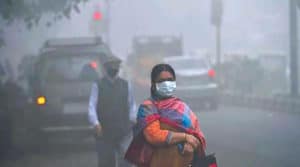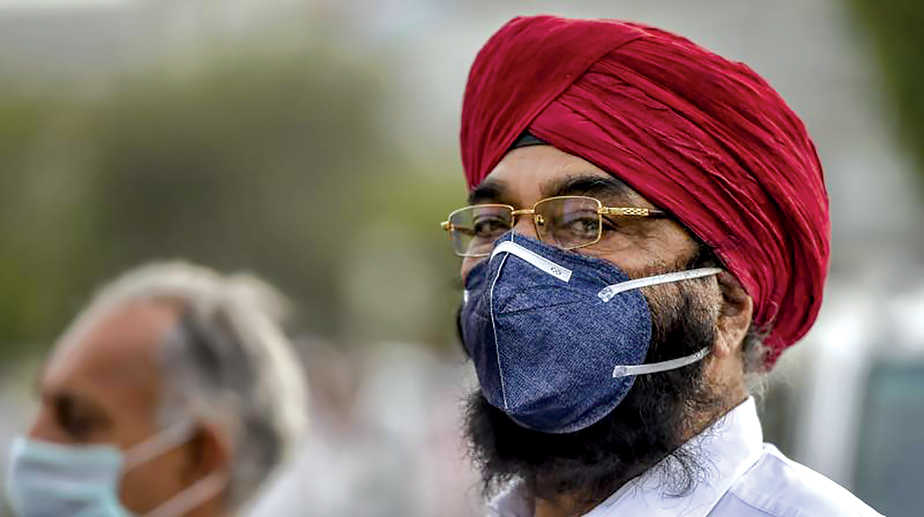Delhi’s air pollution level is on an all-time high and people are resorting to anti-pollution accessories to keep themselves safe. But are they really able to shield us from the poor air quality?
It is that time of the year again when the quality of air in the capital has become poor and is deteriorating at an unprecedented rate. The ambient air quality of the city stands currently at 574, according to SAFAR (System of Air Quality and Weather Forecasting and Research), which is way above the safe level. In fact, according to standards, Delhi’s air quality currently stands in the ‘severe plus emergency’ category.
Doctors and experts say that the air quality in the capital is so bad right now that it is equivalent to smoking 15 cigarettes at a time. Hospitals around the city are lining up with patients complaining of respiratory problems, as the city remains covered under a thick blanket of smog.
To brace themselves against the health hazards that are most likely to emanate from this, Delhiites are turning to anti-pollution accessories that have now become a basic necessity. “I have been living in the city since the time I was born,” says 56-year-old Dalbeer Kaur, a resident of Noida. “Even five years back, the situation was not that bad, but in the last 2-3 years, this pollution problem seems to have escalated to an all-time high. Now, having a mask and an air purifier is a basic necessity for all of us,” she adds.

“Living in Delhi is like living in a place that is experiencing chemical warfare,” says Jai Gupta, the CEO of Vogmask, one of the leading anti-pollution mask companies in India. “So, wearing the right anti-pollution mask is an absolute necessity if one wants to lead a healthy life in the capital,” he adds.
According to Gupta, the anti-pollution mask can be classified into three types based on the type of filters — N95, N99 and activated carbon filter. The N95 filters 95% of the harmful particles present in the air, while the N99 filters 99% of it. The activated carbon filter mask filters not only the harmful PM 2.5 particles, but also the residual carbon particles in the air, in addition to also filtering the exhaled air from our body.
“There are harmful pollutant gases like carbon monoxide and sulphur monoxide in the air, but nothing compares to PM 2.5. It is very harmful as it affects breathing and ultimately risks the life of the person inhaling the air. So, filtering it is extremely essential”. The average PM 2.5 level around Anand Vihar is currently extremely hazardous — 999, while the average in the city is around 410, which is way above the safe limit of 99.
In this hazardous air, Jai Gupta urges the citizens of Delhi to stop wearing the cheap hospital surgery masks as it does not filter the air, but only obstructs the air from entering our body. However, for a man with an average salary, it is difficult to afford such masks, whose minimum price is Rs 699. In spite of such a high price, the sale of their items has increased drastically, according to Gupta, who claims that they are making much more profit at this time as compared to the rest of the year.
Though the mask is still the most popular mobile anti-pollution accessory, another product too is quickly capturing the market. Nasal filters, which are small gadgets that can be put inside our nostrils, is also rising in popularity. “Our nasal filters are easy to handle and more affordable than pollution masks,” says Piyush Saxena, a representative of Clenare, the leading company that produces nasal filters.
The devices contain filters inside them which absorb the harmful particles from the air when we breathe it, purifying it as it goes inside our lungs. But these filters have to be changed, once they lose their power of filtration. “The filters last on an average for 15 days,” says Saxena. “But in severe air conditions like the one in Delhi right now, the filters will last for a maximum of seven days. Some of our customers have even changed their filters after three days,” he adds. Priced at Rs 399, it is cheaper than the masks. But the air filters, which cost around Rs 200, need to be changed every seven days. According to Saxena, the demand for his product has gone up more than twice, in comparison to what it is during the year, so much so that his supply cannot meet the demand at this point of time.
But it is not only the air outside that needs to be filtered. Even the air quality inside our homes is on the decrease, and that is where the function of an air filter comes in. “What an air purifier does is blocks all the small pollutants below the size of 0.3 microns,” says Dhariyash Rathod, the representative of SmartAir, the leading air purifier company in the country.
“If these particles enter your bloodstream, it flows directly to the heart leading to a heart attack,” he adds. Incidentally, according to a WHO report, 74% of the deaths due to air pollution have been due to a heart attack.
Rathod too, says that the demand for his filters, which are priced between Rs 2,299 and Rs 39,000, are at an all-time high in what he describes as the “peak pollution season”.
However, with the air quality more than six times above the normal level, are these accessories useful enough? Dr Hemant Kalra, a chest specialist from Delhi, says, “These accessories do help in preventing health hazards due to air pollution. But with the pollution levels so high, the filters inside the accessories tend to get damaged very easily due to overload.”
“So, one should use the masks very carefully and keep a check on the filters from time to time. But the levels are so high that it is difficult to protect oneself from the hazards of air pollution in the city right now,” concludes Dr Kalra.





